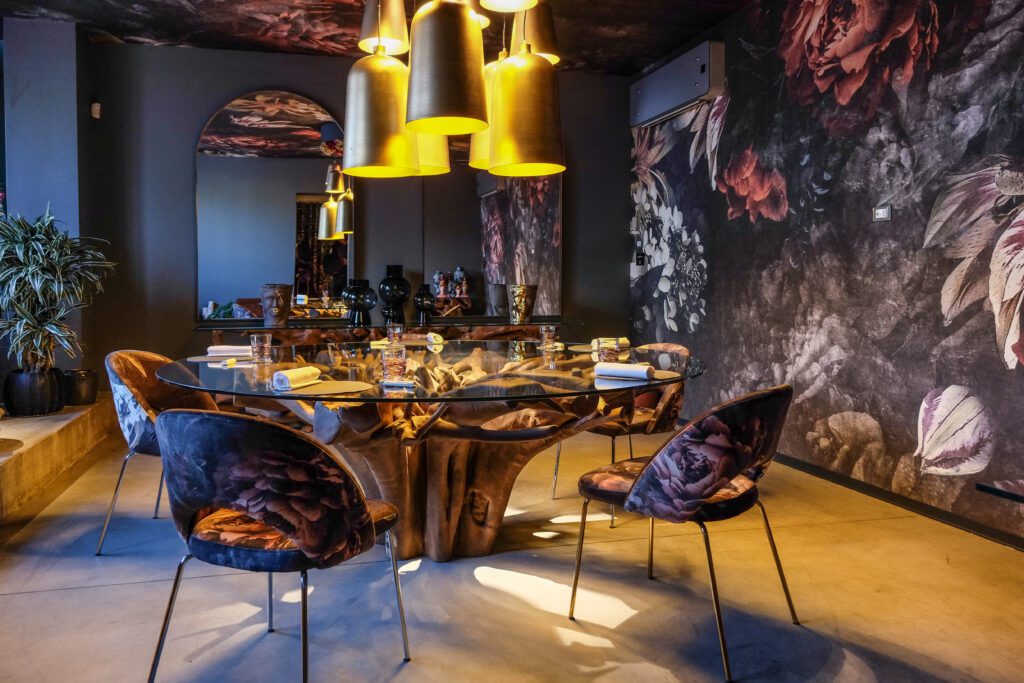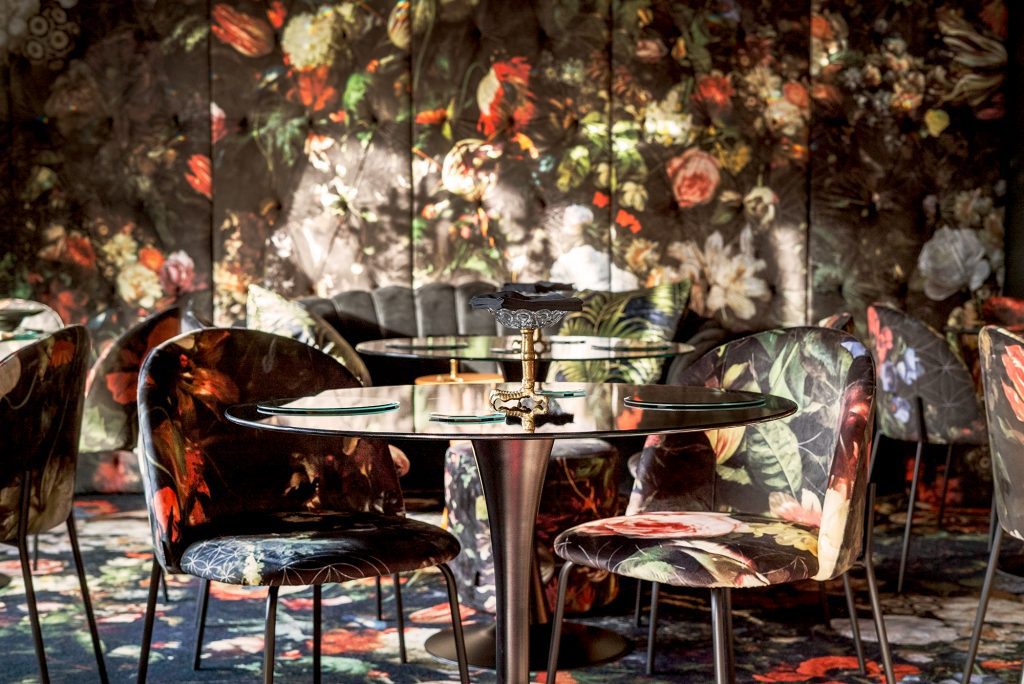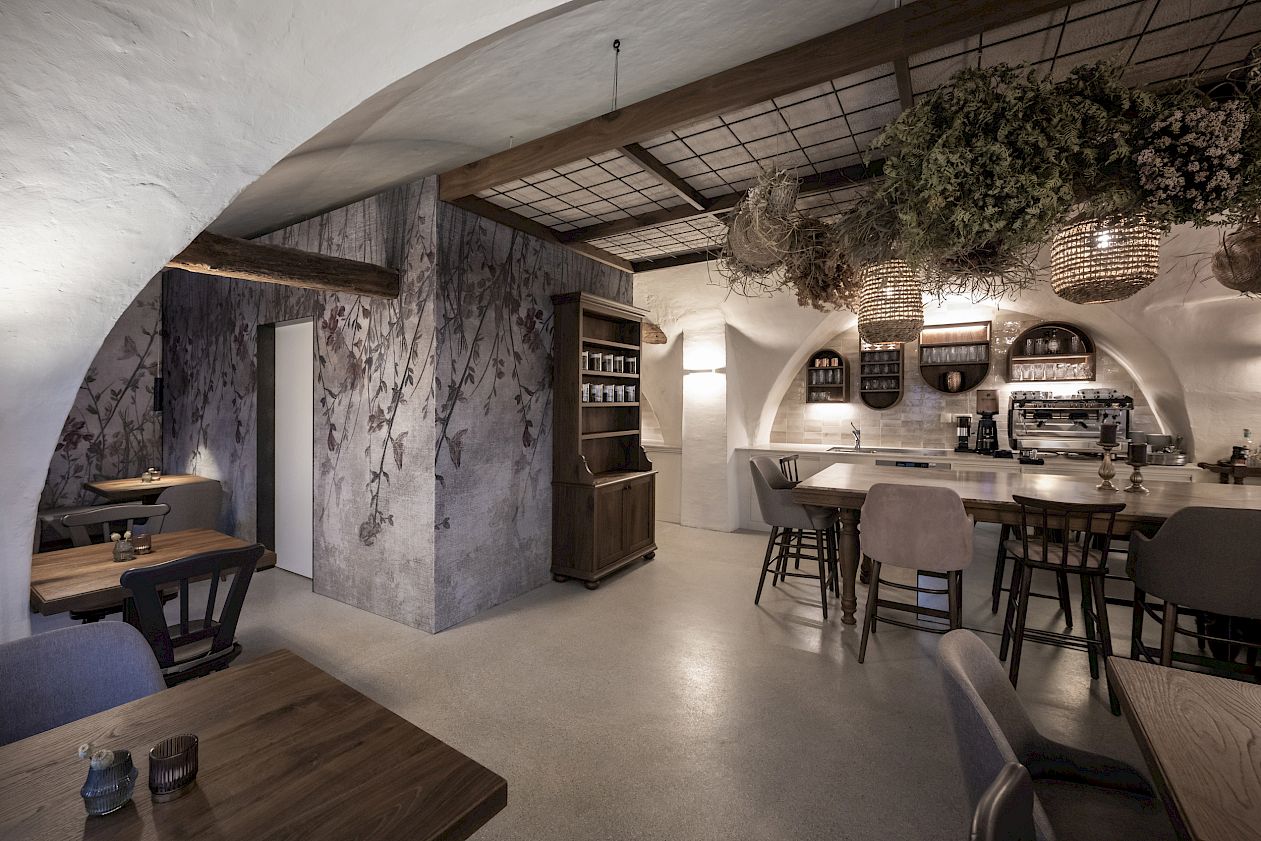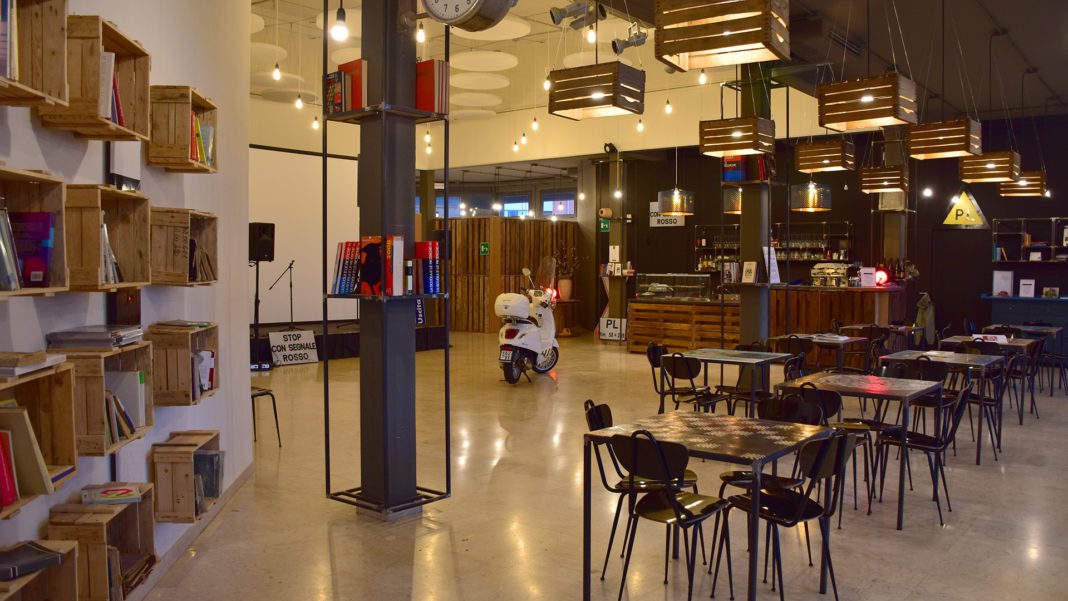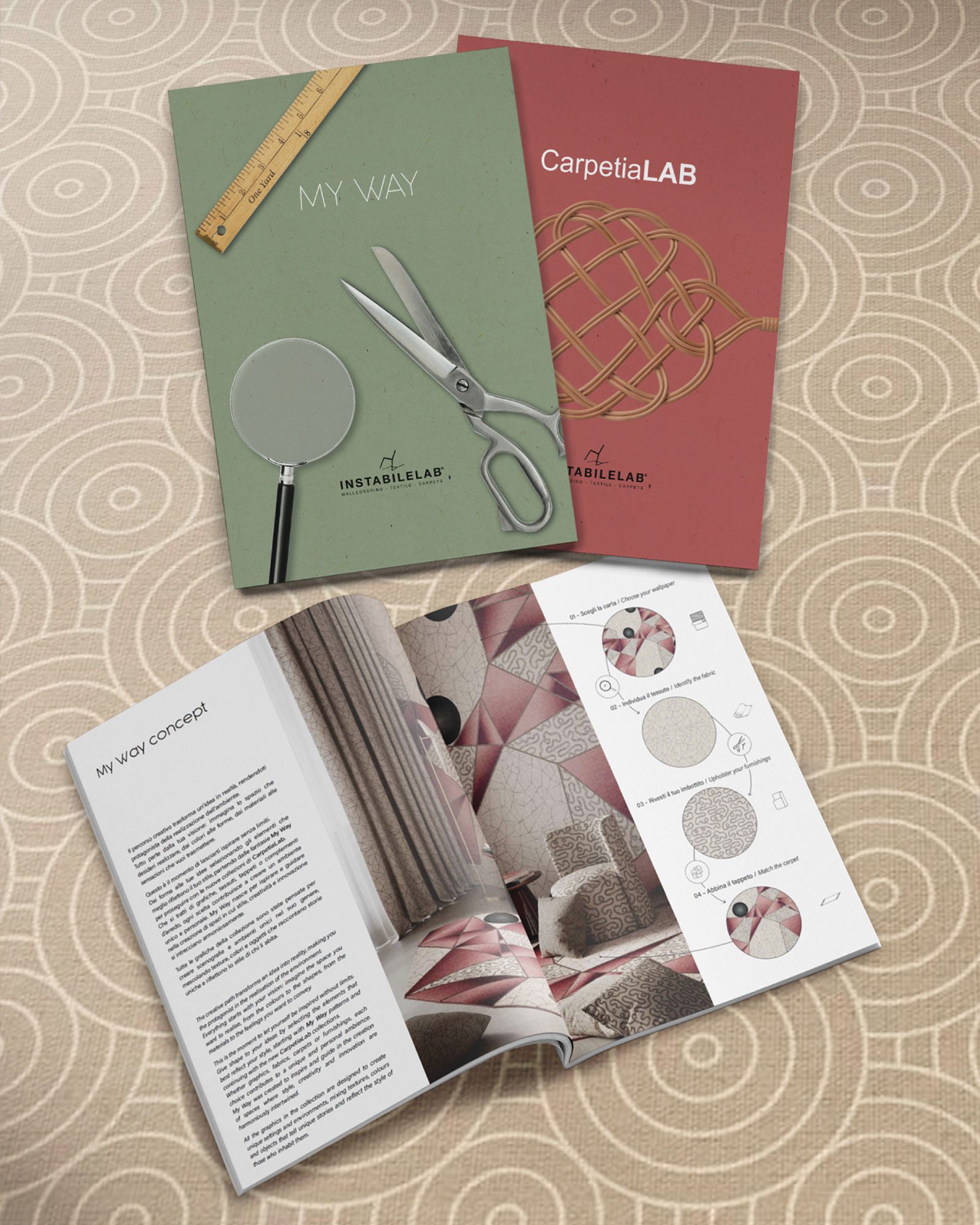Architect Andrea Rinaldi’s insight into the relationship between space and food experience
How environment influences taste perception
Why does the architecture of an environment influence taste?
Taste is the only sense with which architecture cannot relate directly: visual, acoustic and tactile perception can be strongly influenced by the architecture around us, even smell can be.
Even though it is the sense least considered because it is difficult to address concrete experiences, architecture and taste are inextricably linked: one does not experience tasting except in a physical space, from the building to the man-made space.
Quite simply, architecture, just like good tastes and smells, can reinterpret nature, can influence mood, can inspire emotions, can suggest simple solutions to complex problems. Can tasting a piece of Parmigiano-Reggiano with traditional balsamic vinegar (taking a cult of Emilian gastronomy as an example) in one architectural setting versus another change the emotion of taste?
Architect and interior designer Elsie de Wolfe wisely said, „I am convinced that décor can do a lot for food and food can do a lot for décor.“
There are several authors who have addressed the subject of food in relation to aesthetics and the environment in which it is consumed. Some of these authors focus on the dining experience in the context of refined and well-appointed environments. Joanne Harris (author of „Chocolat“) has a strong focus on the sensuality and aesthetics of food, particularly chocolate, and how these influence the atmosphere of a place, Laura Esquivel („Like Water for Chocolate“) interweaves fiction with culinary recipes, exploring the relationship between food and emotions. Peter Mayle in ‚A Year in Provence‘ and also in other novels about food, detailed the pleasures of French cuisine and its connection to the beauty of its surroundings. „The Elegance of the Hedgehog,“ by iBarbery deals with the subject of food in a refined way, reflecting on the art of cooking and its relationship to beauty. Anthony Bourdain, although known primarily as a chef and television personality, has written several books, such as „Kitchen Confidential,“ that explore the world of dining and its connection to aesthetics and the overall experience.
Former New York Times food critic Ruth Reichl has written several memoirs, including ‚Garlic and Sapphires‘, which reflect on food and her experience of it in various architectural contexts. Finally, Isabel Allende in ‚Aphrodite: Tales, Recipes and Other Aphrodisiacs‘ also explores the relationship between food, love and sensuality. These authors offer unique perspectives on the connection between food, aesthetics and the environment: the architecture of places dedicated to tasting, perhaps more than any other architectural place, the mirror of contemporary culture. It represents, in fact, the place of time that we can dispose of differently, that time subtracted from any productive function or other specific purpose. A place of time that we could define as ‚lost‘ – not in the sense of lost time, i.e. the time when we feel we are doing nothing useful – but that time devoted to pleasant emotions, reflections, etc., which often represents the richest time in life. A time that could imply spaces that are not rigidly codified by the exasperation of functionalism, the foundation of speculative architecture, but rather spaces where multiple relations are permitted, where every corner is capable of arousing emotions. Spaces that, precisely because they are not strictly related to the basic necessities of life, represent the ability of a community to identify with architecture, to use architecture as a language to communicate the culture that is the foundation of that same community.
Every country bases a large part of its traditions on the materials it feeds on and the body learns, also through tasting, the ability to distinguish and research. Italy as a whole is renowned throughout the world for its food and wine experience: from the north to the south of the peninsula, the diversity and quality of products, land, dishes and wines is simply exceptional. Imagine each of these flavours and fragrances closely linked to the cultural, landscape and production environment, in relation to different architectural spaces capable of enhancing their value.
None of this. Everything, except the exceptions that confirm the rule, is homologated and codified. Everything is levelled on the sloppiness of disarming kitsch spaces, poor in identity, seeking the stereotype of luxury or the fashion of the moment, incapable of enhancing local potential, indeed capable of negatively conditioning the perception of taste. All of this from the eating place, to the wine cellar, to the pizzeria and fast food restaurant, to the restaurant famous for the quality of its cuisine, to the place of production. This way of understanding the architecture of the spaces of taste is nothing other than a mirror of the way of understanding architecture as a whole in contemporary society.Something you don’t know, something extra that serves absolutely no purpose, just as the space of taste has no relation to taste itself. A former local administrator, a free example of this inculture, said that it was a matter of taste (in the sense of I like it or I don’t like it) and that everything could be like a shed; the important thing was that it was cheap and had a gabled roof.
We also owe the quality of the places we live in to these people.
Jean Anthelme Brillat-Savarin, a French politician and gastronome of the last century, said „The table is the only place where what is beautiful is also good.“
The combination of a well-kept ambience and a high-quality dish generates an extraordinary experience, where every sense, visual and gustatory, becomes a protagonist. The interior design of the room, from the choice of furniture to the arrangement of the tables, the decorative elements of the walls, the attention to adequate lighting, the care of every detail, all come into harmony and blend to create an ambience that not only enhances the food served, but creates a sense of anticipation, a visual anticipation that creates desire and prepares the palate. The context transcends the concept of aesthetics, flanking it with that of making the refined world of gastronomy the protagonist in which each dish is presented as a work of art on the table, celebrating the beautiful and the good.
It is interesting how the Italian language uses the word ‚buono‘ to designate both a generous, mild personality, rich in virtues and as an attribute to a food that fully satisfies the taste, as if the issues were linked. Following this risky analogy, good food is associated with beauty, according to the Greek meaning of Kalokagathìa, a term derived from ancient Greek, from the contraction of two adjectives: kalòs (beautiful) and agathòs (good). The ancient Greeks in fact associated outward beauty with nobility of soul and virtue. When Homer described his heroes, he presented them as attractive-looking young men, valiant and ready to fight bravely. This combination of beauty and goodness was precisely called kalokagathìa. For the people who gave birth to democracy, what was beautiful was necessarily also good.
Applying this concept to architecture opens up the well-known considerations on the direct incidence between degradation/ neglect and the fragility of the population. Linking it to quality dining, to good food, further pushes the thinking, of the previously mentioned Brillat-Savarin ‚tell me what you eat and I will tell you who you are‘, forcing us into new (old?) paradigms.
There are examples that seek this capacity of architecture and design to enhance the sense of taste, to bring together the beautiful and the good, which despite its ephemeral nature, is capable of arousing emotions whose boundaries we do not yet know. These are not trendy spaces, places or objects, striking architectures, but simply convincing spaces, elegant in their simple and proportionate solution to different problems.
Certainly we can say that ‚it is not a matter of taste‘.
Andrea Rinaldi
- From old workshop to restaurant: BOGEN – IL BISTROT DEI FIORI, VIA Dr Josef Streiter, 31 Bolzano, by studio NOA ©AlexFilz . Noa Bogen
- Redevelopment of the Literary Café BINARIO 49, Via Turri n.49 42121 Reggio Emilia (RE) by Laboratorio di Architettura




